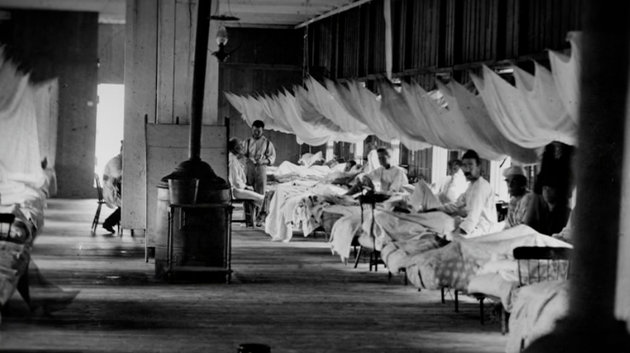Dreamworks has released the teaser trailer for How to Train Your Dragon 2, due out in the summer of 2014. Though they shied away from depicting Hiccup as an amputee in the video game that followed the hit movie, his inventive prosthetics are on full display in the trailer. Disability-friendly Dreamworks always includes captions and audio description in their animated releases, and we expect How to Train Your Dragon 2 will be no exception.
Veteran’s battle to survive carries him to Hollywood
from USA Today:
http://www.usatoday.com/life/movies/news/story/2012-05-16/greg-gadson-battleship/55030538/1
Veteran’s battle to survive carries him to Hollywood
By Scott Bowles, USA TODAY
LOS ANGELES – Greg Gadson’s departure from Baghdad was a sudden one.
Gadson, a lieutenant colonel with the Second Battalion and 32nd Field Artillery, was returning from a memorial service for two soldiers when his vehicle passed a roadside bomb on May 7, 2007.
Gadson remembers the detonation sending his body tumbling through rubble, then medics placing him on a stretcher in a helicopter, his severed feet sitting in his lap. He awakened days later at Walter Reed Army Medical Center in Washington, D.C., his legs amputated above the knees.
“When you come to grips with the injuries like that, you don’t think of anything in your future,” he says. “I never imagined anyone outside the military would be interested in me.”
Turns out a lot of folks were, including the New York Giants and now Hollywood. Gadson makes his acting debut in Battleship, playing Lt. Col. Mick Canales, a vet struggling with recovery much as Gadson did.
A 24-year veteran and director of the Army’s Wounded Warrior program, Gadson says his goal in rehabilitation was never to become a spokesman for the wounded. It was just to walk again.
Not only would he regain mobility on “power prosthetic” legs — artificial limbs equipped with gyroscopes, accelerators and hydraulics to emulate a knee — Gadson would become a symbol of recovery. After the news media picked up his story, he began fielding offers to be a motivational speaker.
His accepted, including making a pregame speech to the Giants before they won the 2008 Super Bowl.
Gadson tailored a simple but resonant theme: “Whenever you have a formidable task, instead of looking up, look down. Literally take it one step at a time. You’ll be overwhelmed by the broader view.”
Battleship director Peter Berg was overwhelmed by Gadson’s story. He read an article about the soldier in National Geographic and tried for three weeks to offer him a part in the movie. But every time he called, Berg — who is built like a lineman and cusses like a sailor — was met with skepticism.
“He kept thinking I was an Army buddy trying to prank him,” says Berg, who introduced Gadson at Battleship’s L.A. premiere to a standing ovation. “I finally had to fly out to D.C. to convince him. He’s a badass.”
A former West Point football player, Gadson waved off his double for the movie’s stunts, including a fight scene with an alien.
“I know it’s clichéd, but this guy is a walking example of positive energy,” Berg says. “He has no sense of self-pity. You wouldn’t believe the energy he brought to the set.”
Gadson says he is open to more film roles, as long as they don’t interfere with his current mission.
“As a service member, there are a lot of people who have endured what I have, but their paths won’t be highlighted,” Gadson says. “I want to speak up for them. I know we’re not promised tomorrow. But there is a road ahead.”
Hook
[easyazon-image align=”left” asin=”0767836324″ locale=”us” height=”160″ src=”http://ecx.images-amazon.com/images/I/51xvJ6-MWOL._SL160_.jpg” width=”112″][easyazon-link asin=”0767836324″ locale=”us”]Hook[/easyazon-link]
Ah, Peter Pan. The beloved childhood classic that taught entire generations of children to fear and hate amputees and metal prosthetics, with the depiction of evil Captain Hook. In this sequel of sorts, Peter Pan has left Neverland for the real world with a job as an investment banker, and does not remember his time as a Lost Boy though he has married Wendy’s granddaughter Moira. Captain James Hook, still smarting from his defeat at the hands of Pan, kidnaps their two children and plots to turn them against him.
Pete must return to Neverland to save them. But without conscious memories of how the place operates, he’s in danger when he stumbles onto a gathering of pirates. Tink instructs Peter to cover one eye with a blindfold, turn one foot inwards, limp, and drool… in order to keep people from looking at or talking to him.
If possible, Captain Hook is portrayed even more offensively than in the Disney version; he embodies the worst stereotypes of disabled villains. Though he’s arguably the most powerful person in Neverland with his pirate empire, he constantly complains to Smee that he hates living in a flawed body, and puts a gun to his head. (He really wants Smee to talk him out of it, though, which Smee does grudgingly.) He has no love interest; instead he’s portrayed as effeminate. He exhibits symptoms of PTSD, petrified of the sound of ticking clock (the harbinger of the crocodile that ate his hand).
War-Torn 1861-2010
 Wartorn 1861-2010 does a very good job of showing, through letters and articles written by past veterans of the Civil War and World War I, continuing with candid discussions about dysfunctional behavior on the part of World War II veterans, and the daily lives of Gulf War, Iraq and Afghanistan veterans, that exposure to traumatic sights and experiences during their military service had similar effects on returned servicemen and their families during very different historical eras in which very different technologies and cultural mores prevailed.
Wartorn 1861-2010 does a very good job of showing, through letters and articles written by past veterans of the Civil War and World War I, continuing with candid discussions about dysfunctional behavior on the part of World War II veterans, and the daily lives of Gulf War, Iraq and Afghanistan veterans, that exposure to traumatic sights and experiences during their military service had similar effects on returned servicemen and their families during very different historical eras in which very different technologies and cultural mores prevailed.
What is now known as PTSD was called by different names at different times: in World War I, “Shell Shock” in recognition of the paranoia caused by the sight and sound of what was then new weapons technology which brought impersonal deaths and maimings; in WWII “battle fatigue”; these various terms describe a psychic wounding which takes different forms, but in some instances has led to suicidal ideation, social isolation and feelings of anomie in those who are convinced that the people around them (in most cases the civilian population) do not understand them.
Societal attitudes (and often, those of the military) in the past, did nothing for them at best, and exacerbated the problem, at worst. “Battle fatigue” was “not something you wanted to have on your record’ one WWII veteran said in the context of a discussion of PTSD-induced behaviors on the part of several of his cohorts at a meeting of a veterans organization. Another chimed in that it was equivalent to being called a coward. Though the “side” of the military Establishment of the present day is shown in the documentary, with one high-ranking officer saying that the Army is taking steps to become more effective in reducing soldier suicides and “recognizing and treating” what he referred to as “PTS”, there is still a long way to go, and this particular officer’s attitude is apparently has not always been shared by many of his contemporaries in the service.
Another issue is that Traumatic Brain Injury (which is getting a lot more recognition, both public and official, in this particular American war) and PTSD share some common symptoms and may in some instances go hand-in-hand.
Some returned soldiers who _did_ commit suicide are discussed by their families. In one instance in the documentary, a soldier who sought professional help through the proper channels while on active duty was faced with a situation in which the military psychologist spoke to him for only a few minutes, dismissed the fact that on the paperwork, he’d checked off the box saying that he was thinking of suicide, and claimed he was “faking it” and sent him back to barracks…with his weapon. This turned out to be a situation in which not only did the military bureaucracy dismiss and fail to attempt to treat the problem, they effectively facilitated the suicide.
Another left the service, after which a downward spiral commenced characterized by self-loathing and culminating in suicide.
Then there are the returned soldiers who not only replay their wartime experiences in dreams and imaginings, but do things which may have been conducive to their survival in wartime situations, but which get them into trouble in the civilian world. One former soldier who killed a Middle Eastern cab driver got a lengthy prison sentence, his conduct was explained by the notion that due to his PTSD, he had a waking hallucination of a wartime situation and killed a harmless individual in civilian life, but the PTSD was not a legal defense in their state, and the California penal system provided no treatment for the PTSD.
This documentary, perhaps of necessity, limits itself to discussion of PTSD in the military developed under combat circumstances. One criticism of this documentary is that it presents a bleak picture and prognosis for people actually living with PTSD, and says very little about what resources are available to veterans and active duty servicemembers with PTSD. The official documentary website has a list of PTSD resources and websites for veterans and family members, as well as some more nuanced interviews with former soldiers suffering with PTSD and/or their family members in which they go into more detail about the interventions available, the bureaucratic hurdles to getting help, and what worked for them. It also does not go into very much detail about current methods and means of treatment, and whether they are actually helping returned veterans, though the DVD also contains footage of a separate panel discussion in which several individuals from government departments and various capacities in the services discuss the need for a more proactive approach by the services to identifying and treating PTSD in those on active duty, before they leave the military.
Alas, the panel discussion footage is uncaptioned.


